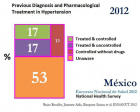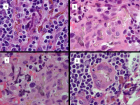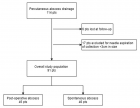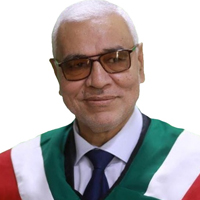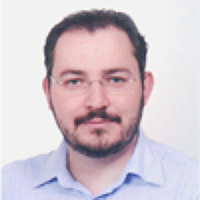Abstract
Commentary
We may need to reconsider when to apply sunscreen in our daily life
Win L Chiou*
Published: 22 October, 2019 | Volume 3 - Issue 1 | Pages: 007-010
Broad-spectrum sunscreens are now widely used worldwide as an adjunct to help prevent sunburn, skin cancers and premature skin aging. In the United States, all persons older than 6 months are recommended to apply sunscreen to all sun-exposed skin from toes to head except eyes and mouth even on cloudy days. Such a recommendation is apparently based on concepts that exposure to sunlight damages the skin, the damage is cumulative and hence any sun exposure should be minimized or prevented. This communication raises several questions suggesting that the above recommendation may need to be reconsidered. For example, numerous previous studies have indicated many potential health benefits from non-burning sun exposure including protection against sunburn, melanoma, colorectal cancer, breast cancer and prostate cancer, increasing vitamin D synthesis, helping sleep, reducing blood pressure, heart attack and stroke. Recent studies suggested that regular lifetime non-burning sun exposure may not result in premature skin aging and the skin aging is mainly caused by the intrinsic factor. Skin aging or whole-body aging has been recently postulated to be mainly attributed to a gradual reduction in cardiac output/index with age and a new anti-aging or age-reversing nutritional theory has been proposed. An apparent lack of long-term cumulative sunray damage was also supported by reported age independence in incidences of sunburn and skin cancers. It is of interest that the current US policy is different from that of World Health Organization and Australia recommending the need of sun protection only when UV Index is 3 or greater. In view of the above, some general guidelines regarding when to best apply sunscreen are proposed.
Read Full Article HTML DOI: 10.29328/journal.adr.1001007 Cite this Article Read Full Article PDF
Keywords:
Sunscreens; Sunlight’s benefits and risks; Skin cancers; Sunburn; Aging/antiaging theories; UV Index
References
- USA FDA website: Tips to stay safe in the sun: From sunscreen to sunglasses.
- Guerra KC, Crane JS. Skin cancer prevention. StatPearls (Internet). TreasureIsland (FL). 2019. PubMed: https://www.ncbi.nlm.nih.gov/books/NBK519527/
- Fisher GL, Datta SC, Talwar HS, Wang ZQ, Varani J, et al. Molecular basis of sun-induced premature skin ageing and retinoid antagonism. Nature. 1996; 379: 335-339. PubMed: https://www.ncbi.nlm.nih.gov/pubmed/8552187
- Nole G, Johnson AW. An analysis of cumulative lifetime solar ultraviolet radiation exposure and the benefits of daily sun protection. Dermatol Ther. 2004; 17: 57-62. PubMed: https://www.ncbi.nlm.nih.gov/pubmed/14728700
- Hoel DG, Berwick M, de Gruijl FR, Holick MF. The risks and benefits of sun exposure 2016. J Dermato- Endocrinol. 2016; 8: E1248325. PubMed: https://www.ncbi.nlm.nih.gov/pubmed/27942349
- Rhee HVD, Esther de Vries, Claudia Coomans, Piet van de Velde, Jan Willem Coebergh. Sunlight for better or for worse? A review of positive and negative effects of sun exposure. Cancer Res Frontiers. 2016; 2: 156-183.
- Grant WB. A review of the evidence supporting the vitamin D-cancer prevention hypothesis in 2017. Anticancer Res. 2018; 38: 1121-1136. PubMed: https://www.ncbi.nlm.nih.gov/pubmed/29374749
- Valles X, Alonso MH, López-Caleya JF, Díez-Obrero V, Dierssen-Sotos T, et al. Colorectal cancer, sun exposure and dietary vitamin D and calcium intake in the MCC-Spain study. Environ Int. 2018; 121: 428-434. PubMed: https://www.ncbi.nlm.nih.gov/pubmed/30266013
- Gandini S, Sera F, Cattaruzza MS, Pasquini P, Picconi O. Meta-analysis of risk factors for cutaneous melanoma: II. Sun exposure. Eur J Cancer. 2005; 41: 45-60. PubMed: https://www.ncbi.nlm.nih.gov/pubmed/15617990
- Planta MB. Sunscreen and melanoma: Is our prevention message correct? J Amer Board Med. 2011; 24: 735-739. PubMed: https://www.ncbi.nlm.nih.gov/pubmed/22086817
- Winter SD, Vink AA, Roza L, Pavel S. Solar-stimulated sun adaptation and its effect on subsequent UV-induced epidermal DNA damage. J Invest Dermatol. 2001; 117: 678-682. PubMed: https://www.ncbi.nlm.nih.gov/pubmed/11564176
- Brenner M, Hearing VJ. The protective role of melanin against UV damage in human skin. Photochem Photobio. 2008; 84:539-549. PubMed: https://www.ncbi.nlm.nih.gov/pmc/articles/PMC2671032/
- Lindqvist PG, Epstein E, Landin-Olsson M, Ingvar C, Nielsen K, et al. Avoidance of sun exposure is a risk factor for all- cause mortality: results from the melanoma in southern Sweden cohort. J Intern Med. 2014; 276: 77-86. PubMed: https://www.ncbi.nlm.nih.gov/pubmed/24697969
- Berwick M, Armstrong BK, Ben-Porat L, Fine J, Kricker A, et al. Sun exposure and mortality from melanoma. J National Cancer Inst. 2005; 97: 195-199. PubMed: https://www.ncbi.nlm.nih.gov/pubmed/15687362
- Wright F. Weller RB, Risks and benefits of UV radiation in older people: More of a friend than a foe? Maturitas. 2015; 81: 425-431. PubMed: https://www.ncbi.nlm.nih.gov/pubmed/26049767
- Taylor CR, Stern RS, Leyden JJ, Gilchrest BA. Photoaging/photodamage and photoprotection. J Amer Acad Dermatol. 1990; 22: 1-15. PubMed: https://www.ncbi.nlm.nih.gov/pubmed/2405022
- Kammeyer A, Luiten RM. Oxidation events and skin aging. Ageing Res Rev. 2015; 21: 16-29. PubMed: https://www.ncbi.nlm.nih.gov/pubmed/25653189
- Quin T, Qin Z, Xia W, Shao Y, Voorhees JJ, et al. Matrix-degrading metalloproteinases in photoaging. J Invest Dermatol. 2009; 14: 20-24. PubMed: https://www.ncbi.nlm.nih.gov/pubmed/19675548
- Shuster S, Black MM, McVitie E. The influence of age and sex on skin thickness, skin collagen and density. Br J Dermatol. 1975; 93: 639-643. PubMed: https://www.ncbi.nlm.nih.gov/pubmed/1220811
- Chiou WL. Aging kinetics of human hearts and skin: New aging theories and implications in the use of sunscreens. Dermatol Arch. 2017; 1: 1-5.
- Li L. et al., Age-related changes of the cutaneous microcirculation in vivo. Gerontology. 2006; 52: 142-153. PubMed: https://www.ncbi.nlm.nih.gov/pubmed/16645294
- Habif HP. Clinical Dermatology, 5th ed. 2010, MOSBY, Elsevier. Pages 747 and 863.
- Anna B, et al., Mechanism of UV-related carcinogenesis and its contribution to nevi/melanoma. Expert Rev Dermatol. 2007; 2: 451-469. PubMed: https://www.ncbi.nlm.nih.gov/pmc/articles/PMC2564815/
- Scott TL, Zbytek Blazej, Granese Jacqueline, Carlson J Andrew, Ross Jeffrey, et al. Repair of oxidative DNA damage and cancer: Recent progress in DNA base excision repair. Antioxid Redox Signal. 2014; 20: 708-726.
- Chiou WL. The phenomenon and rationale of marked dependence of drug concentrations on blood sampling site (part 1), Clin Pharmacokin. 1989; 7: 175-199. PubMed: https://www.ncbi.nlm.nih.gov/pubmed/2680213
- Grignorian-Sharmagian L. Liu W, Fereydooni S, Middleton RC, Valle J, et al. Cardiac and systemic rejuvenation after cardiosphere-derived cell therapy in senescent rats. Eur Heart J. 2017; 38: 2957-2967. PubMed: https://www.ncbi.nlm.nih.gov/pubmed/29020403
- Chiou WL. Compositions and methods for tissue regeneration. United States. Patent No: US 10,456,366 issued on Oct. 29, 2019.
- Lin JS, Eder M, Weinmann S. Behavioral counseling to prevent skin cancer: A systematic review for the U.S. Preventative Services Task Force. Ann Intern Med. 2011; 154: 190-201. PubMed: https://www.ncbi.nlm.nih.gov/pubmed/21282699
- Armstrong BK, Kricker A. The epidemiology of UV induced skin cancer. J Photochem Photobiol 2001; 63: 8-18. PubMed: https://www.ncbi.nlm.nih.gov/pubmed/11684447
- Website for WHO UV Index accessed on September 6, 2019.
- Seigel J, America is getting the science of sun exposure wrong. Website for Cancer Council Australia (2014). 2019.
Figures:
Similar Articles
-
We may need to reconsider when to apply sunscreen in our daily lifeWin L Chiou*. We may need to reconsider when to apply sunscreen in our daily life. . 2019 doi: 10.29328/journal.adr.1001007; 3: 007-010
Recently Viewed
-
Agriculture High-Quality Development and NutritionZhongsheng Guo*. Agriculture High-Quality Development and Nutrition. Arch Food Nutr Sci. 2024: doi: 10.29328/journal.afns.1001060; 8: 038-040
-
A Low-cost High-throughput Targeted Sequencing for the Accurate Detection of Respiratory Tract PathogenChangyan Ju, Chengbosen Zhou, Zhezhi Deng, Jingwei Gao, Weizhao Jiang, Hanbing Zeng, Haiwei Huang, Yongxiang Duan, David X Deng*. A Low-cost High-throughput Targeted Sequencing for the Accurate Detection of Respiratory Tract Pathogen. Int J Clin Virol. 2024: doi: 10.29328/journal.ijcv.1001056; 8: 001-007
-
A Comparative Study of Metoprolol and Amlodipine on Mortality, Disability and Complication in Acute StrokeJayantee Kalita*,Dhiraj Kumar,Nagendra B Gutti,Sandeep K Gupta,Anadi Mishra,Vivek Singh. A Comparative Study of Metoprolol and Amlodipine on Mortality, Disability and Complication in Acute Stroke. J Neurosci Neurol Disord. 2025: doi: 10.29328/journal.jnnd.1001108; 9: 039-045
-
Development of qualitative GC MS method for simultaneous identification of PM-CCM a modified illicit drugs preparation and its modern-day application in drug-facilitated crimesBhagat Singh*,Satish R Nailkar,Chetansen A Bhadkambekar,Suneel Prajapati,Sukhminder Kaur. Development of qualitative GC MS method for simultaneous identification of PM-CCM a modified illicit drugs preparation and its modern-day application in drug-facilitated crimes. J Forensic Sci Res. 2023: doi: 10.29328/journal.jfsr.1001043; 7: 004-010
-
A Gateway to Metal Resistance: Bacterial Response to Heavy Metal Toxicity in the Biological EnvironmentLoai Aljerf*,Nuha AlMasri. A Gateway to Metal Resistance: Bacterial Response to Heavy Metal Toxicity in the Biological Environment. Ann Adv Chem. 2018: doi: 10.29328/journal.aac.1001012; 2: 032-044
Most Viewed
-
Evaluation of Biostimulants Based on Recovered Protein Hydrolysates from Animal By-products as Plant Growth EnhancersH Pérez-Aguilar*, M Lacruz-Asaro, F Arán-Ais. Evaluation of Biostimulants Based on Recovered Protein Hydrolysates from Animal By-products as Plant Growth Enhancers. J Plant Sci Phytopathol. 2023 doi: 10.29328/journal.jpsp.1001104; 7: 042-047
-
Sinonasal Myxoma Extending into the Orbit in a 4-Year Old: A Case PresentationJulian A Purrinos*, Ramzi Younis. Sinonasal Myxoma Extending into the Orbit in a 4-Year Old: A Case Presentation. Arch Case Rep. 2024 doi: 10.29328/journal.acr.1001099; 8: 075-077
-
Feasibility study of magnetic sensing for detecting single-neuron action potentialsDenis Tonini,Kai Wu,Renata Saha,Jian-Ping Wang*. Feasibility study of magnetic sensing for detecting single-neuron action potentials. Ann Biomed Sci Eng. 2022 doi: 10.29328/journal.abse.1001018; 6: 019-029
-
Pediatric Dysgerminoma: Unveiling a Rare Ovarian TumorFaten Limaiem*, Khalil Saffar, Ahmed Halouani. Pediatric Dysgerminoma: Unveiling a Rare Ovarian Tumor. Arch Case Rep. 2024 doi: 10.29328/journal.acr.1001087; 8: 010-013
-
Physical activity can change the physiological and psychological circumstances during COVID-19 pandemic: A narrative reviewKhashayar Maroufi*. Physical activity can change the physiological and psychological circumstances during COVID-19 pandemic: A narrative review. J Sports Med Ther. 2021 doi: 10.29328/journal.jsmt.1001051; 6: 001-007

HSPI: We're glad you're here. Please click "create a new Query" if you are a new visitor to our website and need further information from us.
If you are already a member of our network and need to keep track of any developments regarding a question you have already submitted, click "take me to my Query."








